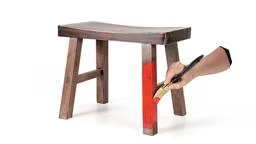Owning your own cabin usually means purchasing one that’s already constructed or buying a piece of property and building from scratch. But there is another way.
Enter: Shacks on Racks

Throwing Out Houses and History
Mountain towns have always attracted an eclectic selection of residents. Carving out a living in these dramatic locales has never been easy. Today, Teton County is one of the most expensive counties in America with the nation’s highest per-capita income from assets. Not only are older, historic structures being demolished for high-density construction, but there is also a dire shortage of affordable homes available for year-round residents who breathe life into the community. It’s a double whammy.“When I heard about a completely updated 1941 craftsman going to the trash, it blew my mind,” recalls Esther. “So many residents work really hard to stay here and someone was sending a beautiful, serviceable home to a landfill. I felt physically sick.”
Esther arranged to move the home. It sat on her driveway for 18 months on blocks before she built a foundation for it. With that, Shacks on Racks was born.
How Shacks on Racks Works
Esther searches public records of demolition permits. Depending on the timeline she’ll have anywhere between 10-90 days to move a house. Relocating a home requires managing a complex web of logistics that includes permitting, structural engineering, architectural drawing and house moving. Shacks on Racks takes care of it all.The buildings are free in the sense that no money is required for the structure itself. But, prospective homeowners should know there are costs involved in transporting the home, having a place to put it, and meeting any codes and permit requirements. Moreover, upfront costs must be paid in cash. Owners and developers are encouraged to donate their “dump budget” towards the structure’s removal and relocation, which can lessen or eliminate transport costs.
Be ready to act. If a structure catches your eye (like that 1970s dream cabin), move fast. You often have a mere 24 hours to commit to the home in question.
Total output costs for the new owner (maybe you!) will vary depending on the condition of the building and its intended use. Structures used as homes will likely cost more to bring to code than those being used as outbuildings. But, the moral benefits include saving a treasured building from the landfill and therefore respecting the environment, honoring the dwelling, and acknowledging the community.








_11868_2023-11-09_10-09.png)






